Ireibaru: The only settlement maintained for 4,000 years on a southern isle. Exchange conducted with Kyushu from the Early Jōmon.

Traces of
livelihood using spring water
The site straddles a
low marshy area at the base of a hill, and an area of sand dunes
spreading over an alluvial plain. The sand dune area was residential,
and the low marshy area evidently served as a kitchen using spring
water, where a sieve for leaching tree nuts, pottery and stone tools
were recovered. The photo shows the investigation of the low marshy
area. A spring is on the right side of the photo.

Water gushes forth from the spring even today |

Location of the
site |
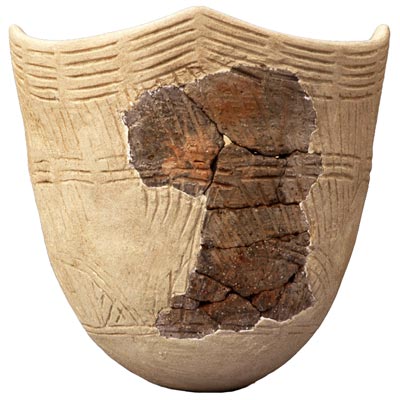
Sobata style
pottery |
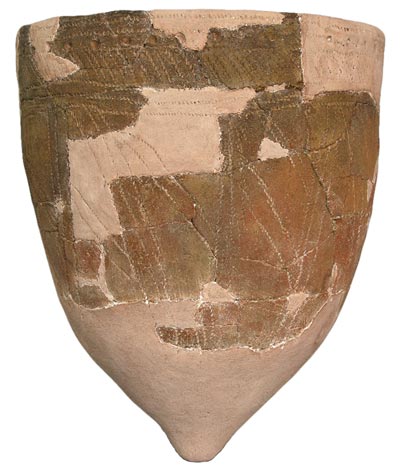
Murokawa lower
strata style pottery |

Sieve set in the
spring of the low marshy area | |
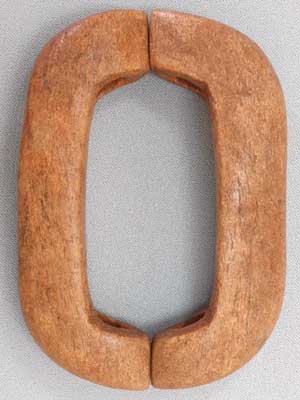
Bracelet |

Bone implements |
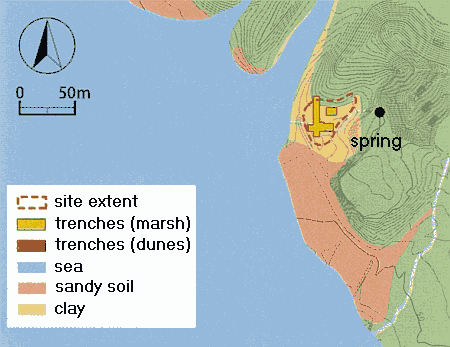
First half, Early
Jōmon (6,800 ∼ 6,000 BP) |

Second half, Early
Jōmon (5,500 ∼ 5,000 BP) |

Middle Jōmon
(4,500 BP) |
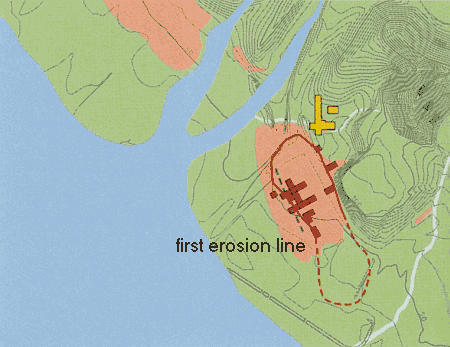
Late Jōmon (3,500
BP) |

Final Jōmon
(2,500 BP) |
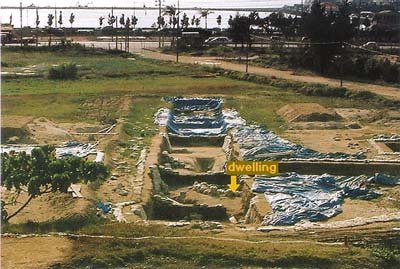
A residence built
in the sand dune area (from the eastern part of the site) |

Omonawa Zentei
style pottery |
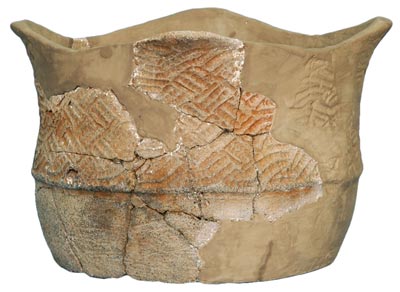
Omonawa Tōdō
style pottery |

Comb recovered
from low marshy ground | |
Ireibaru Site, Chantan Town, Okinawa Prefecture
A settlement maintained at a low area near spring water
Ireibaru is a settlement site between 4 and 7 m elevation, on the western coast in the central portion of the main island of Okinawa, facing the East China Sea. People used the low marshy areas and sand dunes of the site as places of livelihood from the Jōmon period (ca 6,800 ∼ 2,500 BP) to the Gusuku period (fifteenth - eighteenth centuries).
The site was discovered in a test excavation in 1996, preceding a rezoning project in conjunction with the return of American military bases, and investigations were conducted from 1998 ∼ 2005 to verify its extent. The site spreads over a low area with spring water emerging at the base of a hilly slope, and it became clear that the lower marshy spots were used as a water source, and the sand dunes on the seaside as a place of residence. It was also ascertained that the older settlements were on the hilly slope to the east, spreading out towards the coast to the west in later eras.
Kyushu pottery is also recovered
From the lower marshy ground, along with Early Jōmon tsumegatamon pottery (ca 6,800 ∼ 6,000 BP), the oldest pottery for the southern islands region extending from the Amami archipelago up to Okinawa, the Sobata style of Jōmon pottery (ca 5,500 ∼ 5,000 BP) seen in Kyushu was also recovered, as well as pottery found from the Amami archipelago to the main and remote islands of the Okinawa chain for every period from the Middle to the Final Jōmon (ca 4,500 ∼ 2,500 BP). Also, stone tools such as axes, saddle querns and grindstones have been found along with the pottery, together with wooden implements including a stone axe handle, a comb and a sieve, and plentiful quantities of the remains of plants and animals that served as food, such as bones, marine shells, and the shells of nuts and seeds. The large amounts of Sobata style pottery recovered in this area was noteworthy. It can be divided into that which was brought directly from Kyushu, and that which was made in Okinawa. Exchange with Kyushu from a very early stage of the Jōmon can be seen from this, and movement to the south of people using Sobata style pottery is conceivable. Subsequently, it is thought that the Jōmon culture brought with them took root, and gradually formed the unique Jōmon culture of the southern island region.
From the sand dune area, pit dwellings of the Middle and Late Jōmon were found, along with stone formations, pits, and a Final Jōmon hearth. For the pit dwellings, 1 example (with a round plan) for the Middle, and 2 examples (square in plan with rounded corners, and stone-paved floors) for the Final Jōmon have been confirmed. In addition, 7 stone formations have been ascertained, and from the size and shape it s possible these were dwellings. The pit dwellings and stone formations are found to have spread out along a north-south direction.
Why did settlement last 4,000 years?
A wide variety of artifacts are seen for every period from the Early to the Final Jōmon, such as pottery, stone axes and mortars, and bone and shell implements. Obsidian originating from Koshidake in Saga prefecture, and jade from the Hime river in Niigata prefecture, were found here for the Final Jōmon period. These may be said precious materials for considering exchange which took place across a broad area, extending to Kyushu and Honshu.
Ireibaru was a site that lasted 4,000 years, a phenomenon seen only here and without parallel in the southern islands. It is thought that settlement continued for such a long time in this area only because provisions for livelihood could be readily obtained from the bounties of the mountains and the sea. (Tōmon Kenji)
